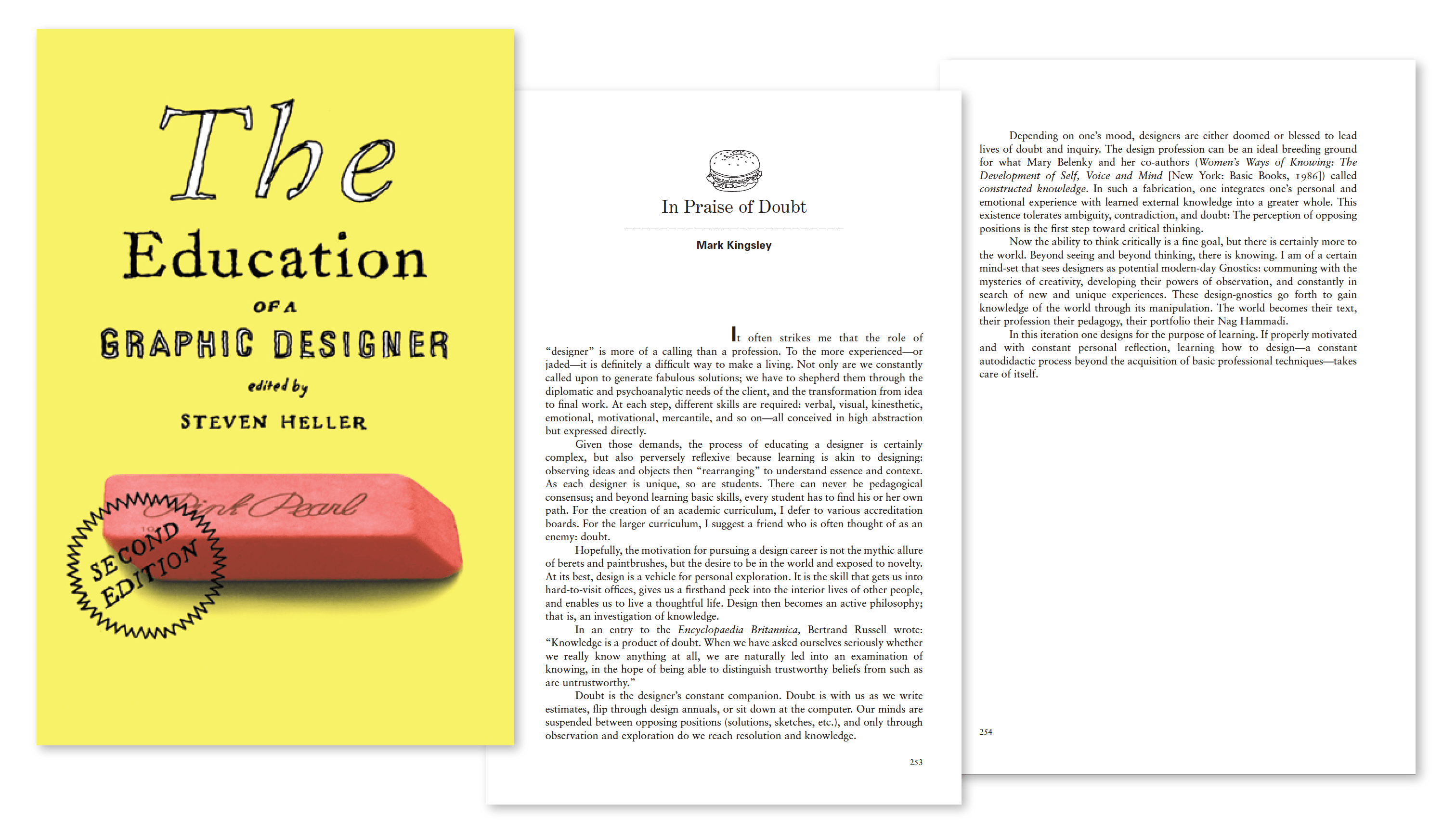This is an updated version of a 2005 essay, first published in The Education of a Graphic Designer, edited by Steven Heller, second edition, Allworth Press.


It often strikes me that the role of “designer” is more of a calling than profession. To the more experienced — or jaded — it is definitely a difficult way to make a living. Not only are we constantly called upon to generate fabulous solutions; we have to shepherd them through the diplomatic and psychological needs of the client, and the transformation from idea to final work. At each step, different skills are required: verbal, visual, kinesthetic, emotional, motivational, mercantile, etc. — all conceived in high abstraction but expressed directly.
Given those demands, the process of educating a designer is certainly complex, but also perversely reflexive because learning is akin to designing: observing ideas and objects then “rearranging” to understand essence and context. As each designer is unique, so are students. There can never be pedagogical consensus; and beyond learning basic skills, every student has to find their own path. For the creation of an academic curriculum, I defer to various accreditation boards. For the larger curriculum, I suggest a friend who is often thought of as an enemy: doubt.
Hopefully the motivation for pursuing a design career is not the mythic allure of berets and paintbrushes, but the desire to be in the world and exposed to novelty. At its best, design is a vehicle for personal exploration. It is the skill that gets us into hard-to-visit offices, gives us a first-hand peek into the interior lives of other people, and enables us to live a thoughtful life. Design then becomes an active philosophy; that is, an investigation of knowledge.
In an entry to the Encyclopaedia Britannica, Bertrand Russell wrote: “…knowledge is a product of doubt. When we have asked ourselves seriously whether we really know anything at all, we are naturally led into an examination of knowing, in the hope of being able to distinguish trustworthy beliefs from such as are untrustworthy.”
Doubt is the designer’s constant companion. Doubt is with us as we write estimates, flip through design annuals, or sit down at the computer. Our minds are suspended between opposing positions (solutions, sketches, etc.), and only through observation and exploration do we reach resolution and knowledge.
Depending on one’s mood, designers are either doomed or blessed to lead lives of doubt and inquiry. The design profession can be an ideal breeding ground for what Mary Belenky and her co-authors (Women’s Ways of Knowing: The Development of Self, Voice and Mind — 1986, Basic Books, New York) called Constructed Knowledge. In such a fabrication, one integrates their personal and emotional experience with learned external knowledge into a greater whole. This existence tolerates ambiguity, contradiction and doubt; and the perception of opposing positions is the first step toward critical thinking.
Now the ability to think critically is a fine goal, but there is certainly more to the world. Beyond seeing and beyond thinking, there is knowing; and I am of a certain mindset which sees designers as potential modern-day Gnostics; communing with the mysteries of creativity, developing their powers of observation, and constantly in search of new and unique experiences. These design-gnostics go forth to gain knowledge of the world through its manipulation. The world becomes their text, their profession their pedagogy, their portfolio their Nag Hammadi.
In this iteration one designs for the purpose of learning. If properly motivated and with constant personal reflection, learning how to design —a constant autodidactic process beyond the acquisition of basic professional techniques — takes care of itself.
This is an updated version of a 2005 essay, first published in The Education of a Graphic Designer, edited by Steven Heller, second edition, Allworth Press.
